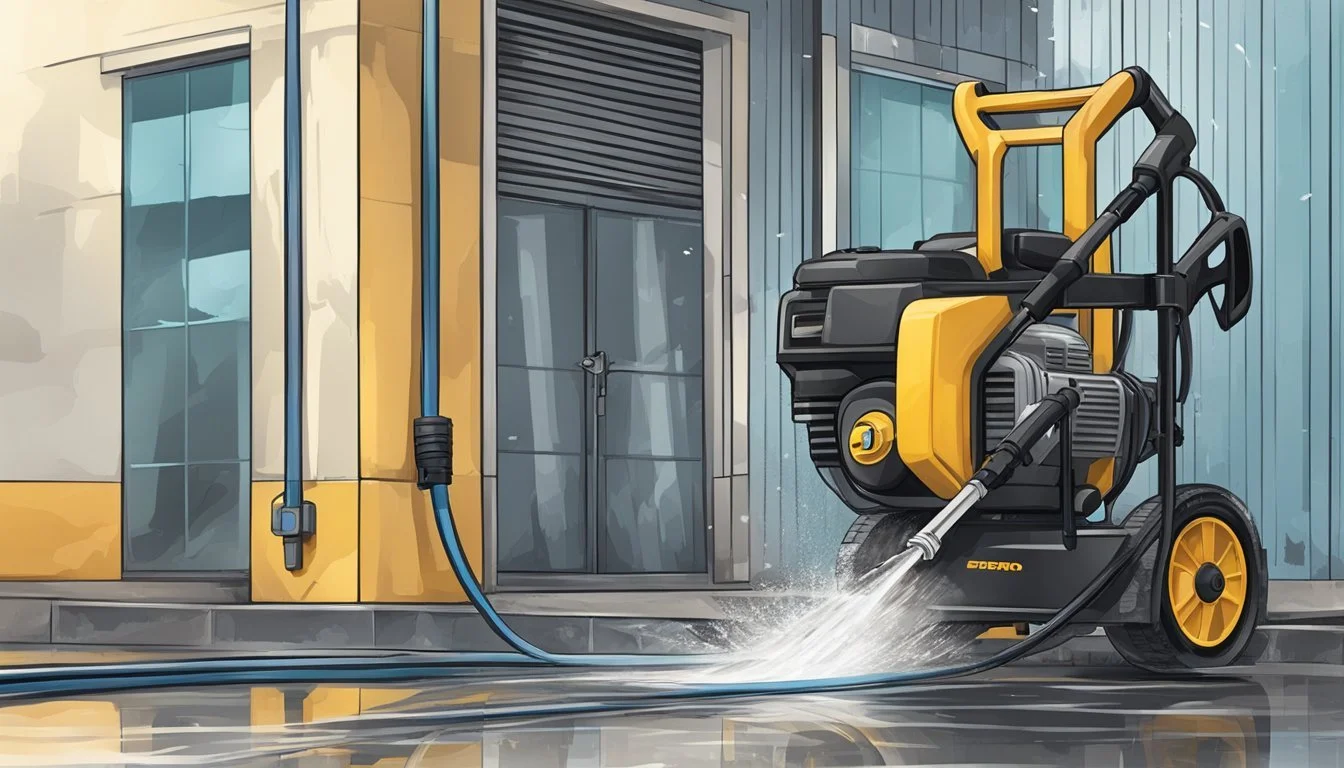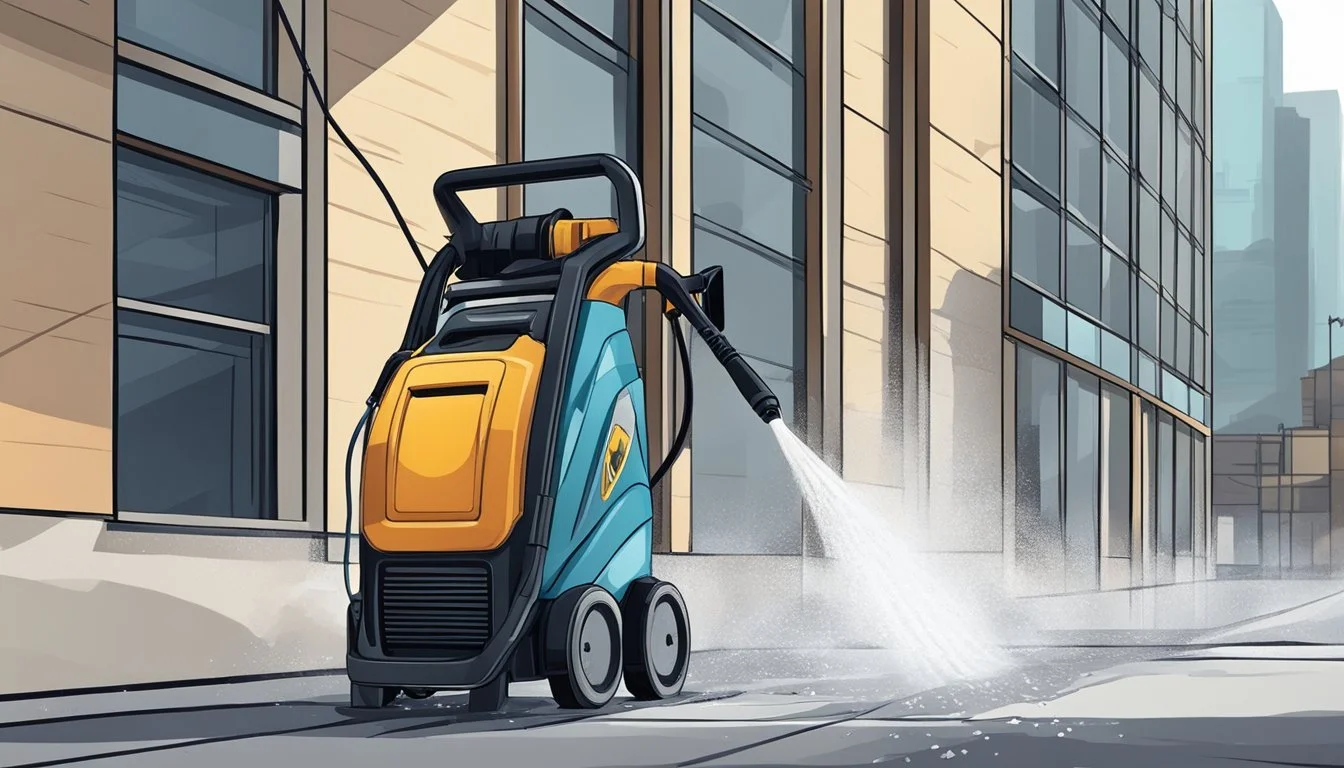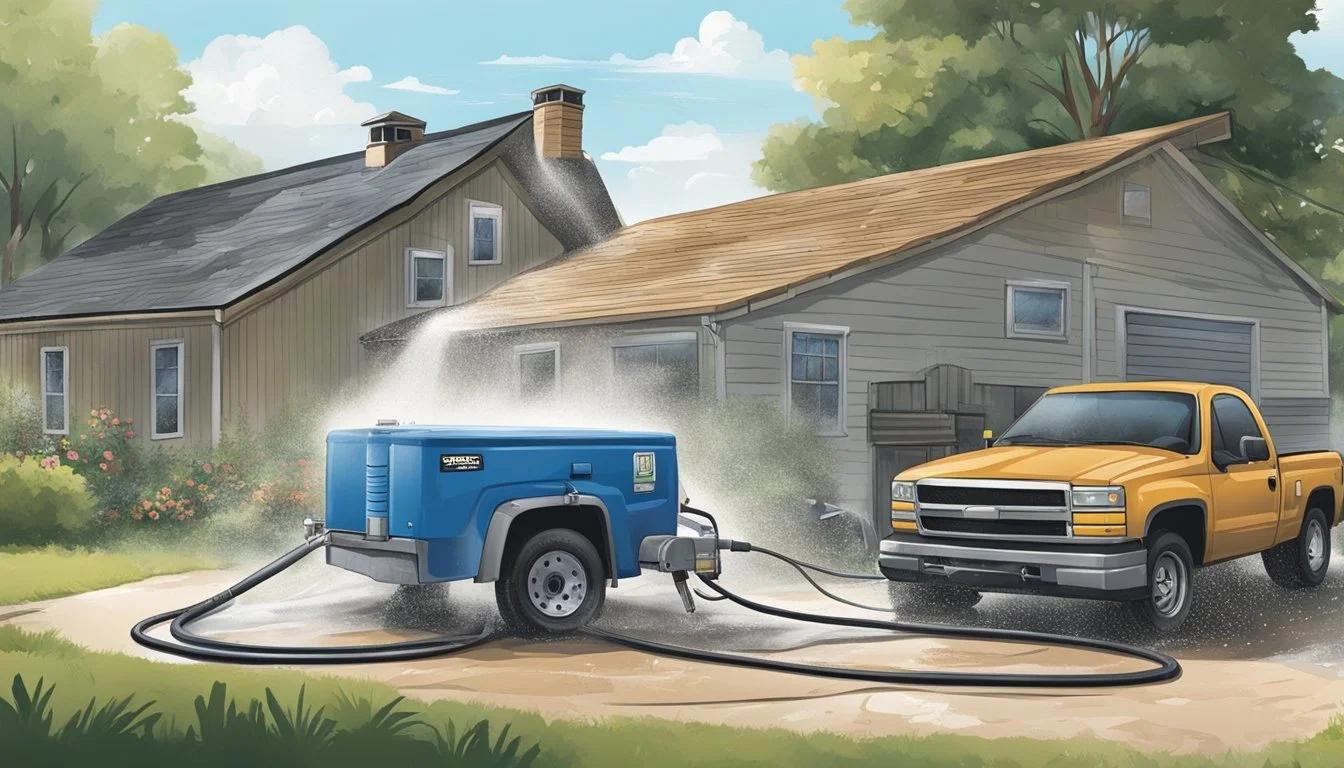Ultimate Guide to High-Pressure Washer Use
Master Cleaning Homestead Equipment and Buildings
High-pressure washers are invaluable for maintaining equipment and buildings on a homestead, offering quick and efficient cleaning power. These machines utilize pressurized water to blast away dirt, debris, and grime, maintaining the longevity of farm machinery, outbuildings, and residences. Understanding how to operate a high-pressure washer correctly is critical to ensure thorough cleaning without damaging surfaces.
Selecting the appropriate pressure washer involves matching the machine's capabilities to the tasks at hand. Pressure measured in pounds per square inch (PSI), and water flow in gallons per minute (GPM) are crucial specifications dictating the effectiveness of the washer. Safe operation demands a familiarity with the unit's features, such as nozzles and detergents, to tailor the cleaning process to various surfaces, ensuring that buildings and equipment are cared for without the risk of abrasion or water damage.
This guide aims to equip homesteaders with the know-how to select and use high-pressure washers. It addresses the nuances of different models, preparations for cleaning tasks, and the techniques needed to clean effectively while safeguarding the integrity of the equipment. With the right knowledge, a high-pressure washer becomes an essential tool for upkeeping a homestead, contributing to a well-maintained property.
Understanding Pressure Washers
Recognizing the correct type of pressure washer and its key components is fundamental for efficient cleaning of equipment and buildings. This entails comprehension of the various models, the mechanics behind pressure washers, and the criteria for selecting the appropriate machine for the task at hand.
Types of Pressure Washers
Pressure washers come chiefly in two main forms: electric and gas-powered models. Electric pressure washers are quieter and ideal for residential use due to their lightweight and lower maintenance needs. On the other hand, gas-powered pressure washers offer higher PSI (pounds per square inch) and GPM (gallons per minute) ratings, signifying more cleaning power, which is beneficial for commercial and heavy-duty applications. Portable options are also available, catering to those requiring mobility.
Pressure Washer Anatomy
A pressure washer constitutes a few critical components:
Pump: Generates high-pressure water.
Motor/Engine: Drives the pump; can be electric or gas.
Hose: Carries the pressurized water.
Nozzle: Directs and adjusts the water spray pattern.
Understanding these parts ensures users can maintain the equipment effectively, leading to better durability and performance.
Selecting the Right Pressure Washer
When choosing a pressure washer, consider:
PSI: Ranges from 1,000 to 4,000 PSI; higher for tougher jobs.
GPM: Determines how quickly the washer covers surface area.
For residential use, one might choose a model with a lower PSI and GPM, while commercial tasks may require robust features. The choice between electric and gas models also plays a part in decision-making, aligned with the operational environment and required mobility of the pressure washer.
Setting Up Your Pressure Washer
Prior to using a high-pressure washer for cleaning, one must focus on safety, proper assembly, and secure connection to a water supply. It's imperative that these initial steps are followed to ensure a safe and effective cleaning experience.
Safety First: Gear and Precautions
Safety concerns with a pressure washer involve both the high-pressure water jet and electricity. The individual must wear safety goggles, durable gloves, and non-slip boots to protect against flying debris and slips. Ear protection is also advisable due to the noise of the machine. Ensuring the pressure washer is connected to an outlet with a ground-fault circuit interrupter (GFCI) is crucial to mitigate the risk of electric shock, especially since water is involved.
Assembly and Preparation
To prepare a pressure washer for use, begin by assembling according to the manufacturer’s instructions. This typically involves attaching the high-pressure hose, lance, and nozzles. It is vital to check all connections for tightness to avoid leaks. Before starting the engine or motor, the individual must ensure any air is purged from the pump by running water through the machine for approximately one minute.
Connecting to Water Supply
A pressure washer requires a steady supply of water. Connect the machine to a water source using a garden hose. To do so, first make sure the hose is free of kinks and securely attached to the water inlet on the pressure washer. Turn the water on fully before starting the machine to prevent damage to the pump, which can occur if it runs dry. The water supply should be clean and free from debris to avoid obstructing the water flow.
Effective Pressure Washing Techniques
Achieving cleanliness and maintaining equipment on a homestead require precise techniques using a pressure washer. Employing the right approach ensures efficiency while avoiding damage to surfaces. Key components include proper handling, suitable pressure settings, and the correct application of detergents.
The Correct Way to Use a Pressure Washer
To begin, one should operate the pressure washer with a steady, sweeping motion, angling the nozzle at about 15 to 45 degrees to the surface for maximum efficacy. Starting from the top of vertical surfaces and moving downwards ensures debris falls away from cleaned areas. Overlapping each stroke prevents streaks and maintains consistent cleaning results. During operation, maintain a consistent distance from the surface to avoid uneven cleaning.
Adjusting Pressure Settings and Nozzles
A pressure washer's effectiveness is significantly influenced by its pressure settings and the nozzles utilized. High-pressure settings are desirable for stubborn dirt on hard surfaces, while lower settings suit delicate materials. Users should adjust the pressure washer settings based on the cleaning task at hand. The choice of nozzle directly impacts water pressure and spread. A 0-degree nozzle provides a concentrated jet for tough grime, while wider angles, such as 25 and 40 degrees, offer a gentler spray suitable for general cleaning. It's essential to select the correct nozzle and pressure setting to match the cleaning job.
Surface Type
Concrete
Siding
Vehicles
Suggested Nozzle
15-degree (Concrete)
25-degree (Siding)
40-degree (Vehicles)
PSI Range
3000-4000 PSI (Concrete)
2000-3000 PSI (Siding)
1200-1900 PSI (Vehicles)
Applying Detergents and Cleaning Solutions
For best results, apply a suitable cleaning solution or soap to break down dirt and grime, especially on greasy or heavily soiled surfaces. Begin by applying the detergent from the bottom up to avoid streaking and let it sit for a few minutes to penetrate and lift the dirt. Be sure to use a low-pressure nozzle setting when applying cleaning solutions to prevent dispersion and ensure the detergent clings to the surface for optimal effectiveness. Following detergent application, users should rinse the surface thoroughly with clean water from the pressure washer, ensuring all soap is removed to avoid a filmy residue.
Cleaning Specific Surfaces and Objects
When using a high-pressure washer, understanding the appropriate technique for different materials ensures effective removal of dirt and stains while avoiding damage.
Building Exteriors and Siding
For cleaning siding, whether it be vinyl, brick, or wood, set the pressure washer to a moderate level to prevent damage. Start from the top, working your way down to ensure all debris and dirt washes away effectively.
Vinyl Siding: Use a 25-degree nozzle and keep the wand a minimum of 12 inches away from the surface.
Brick: A 25 to 40-degree nozzle is recommended, and pre-soaking with a detergent can help loosen grime.
Wood Siding: A wider, 40-degree nozzle is appropriate for preventing damage, and the distance should be increased to 18 inches.
Driveways and Concrete Surfaces
Remove dirt and stains from concrete surfaces efficiently with a high-pressure washer by using a 15-degree nozzle. For driveways, make sure to pre-treat oil stains with a degreaser and use sweeping motions to ensure an even clean.
Concrete: Sweep the area to remove loose debris before washing and hold the nozzle about 12 inches from the surface.
Driveway: After pre-treatment, wash in sections to avoid uneven cleaning patterns.
Deck and Patio Cleaning
Decks and patios require a gentler approach to preserve the wood or tile finish. Use a detergent and a softer spray setting to avoid etching into the surface.
Wood Decks: Use a 40-degree nozzle and stand about 18 inches away, washing along the grain of the wood.
Tile Patios: Fragile tiles may need a 40-degree nozzle and gentle soap; avoid direct spray on grout lines to prevent erosion.
Vehicles and Outdoor Equipment
Vehicles and equipment can accumulate tough grime. Use a low-pressure setting and a foam cannon, if available, for a thorough yet gentle clean. Ensure you're using a nozzle that is suitable for the vehicle's paint to prevent damage.
Cars: Choose a 40-degree nozzle, and wash from the wheels up.
Agricultural Equipment: Remove loose dirt and dust first, and wash with a 25-degree nozzle from a safe distance.
Outdoor Furniture and Decor
Maintain the appearance of outdoor furniture and decor by regularly removing dust and debris. For furniture, use a low-pressure setting; for decor, be mindful of delicate surfaces and adjust pressure accordingly.
Metal and Plastic Furniture: A 40-degree nozzle typically works well, and furniture can be washed from a distance of 12-18 inches.
Decor: Items with intricate designs may require a soft bristle brush and gentle pressure to prevent damage.
Troubleshooting Common Issues
When using high-pressure washers for maintaining homestead equipment and buildings, operators may occasionally face issues that hinder their equipment's functionality. By systematically troubleshooting common problems, they can ensure consistent performance and longevity of their pressure washing equipment.
Dealing with Clogs and Blockages
Clogs and blockages can hamper the efficiency of pressure washers. Key areas to inspect include:
Nozzles: Over time, nozzles can become blocked, usually by dirt or sediment. To resolve this, one should turn off the machine and remove the nozzle. Careful inspection and cleaning with a needle can often dislodge any obstructions.
Filters: The water inlet filter is also prone to clogging. It should be routinely checked for debris and thoroughly cleaned. If damaged, the filter requires replacement.
Hoses and Pumps: Deposits can build in hoses and pumps. Flushing them with clean water can help, and in some cases, vinegar may assist in breaking down mineral deposits.
Pressure Washer Maintenance and Care
Regular maintenance is crucial for the optimal operation of pressure washing equipment. Important maintenance practices include:
Post-usage, operators should run water through the system to flush out detergent and release any remaining pressure to prevent the buildup of residues.
Storing equipment in a clean, dry environment reduces the risk of corrosion and pump damage.
Following the manufacturer's maintenance schedule helps to diagnose wear and tear before it becomes a larger issue.
Resolving Power and Pressure Problems
When a pressure washer experiences inconsistent power or pressure, likely causes and fixes include:
Water Supply: Insufficient water supply should be addressed first by ensuring the garden hose connected to the pressure washer has adequate water flow and pressure.
Electrical Issues: For electric pressure washers, issues can arise from the power source. Checking that the unit is properly plugged in and that the outlet is supplying power is a good first step.
Fuel Levels (for gas-powered models): Ensuring an adequate amount of correct fuel and bleeding the fuel line can alleviate burner issues related to power and pressure.
Unloader Valve Adjustment: An improperly calibrated unloader valve can cause spiking or dropping pressure. It should be adjusted according to the pressure washer manual’s specifications.
Operators should consult their equipment's manual for detailed procedures and safety instructions. By adhering to these guidelines, they can efficiently troubleshoot and maintain their pressure washing equipment.
Safety Tips and Best Practices
When using high-pressure washers, it is critical to adhere to certain safety tips and best practices to prevent injury and property damage. These guidelines will help ensure the safety of the user, the longevity of equipment, and the preservation of the environment and property.
Operating Pressure Washers Safely
Personal Protective Equipment (PPE): Users should wear goggles, ear protection, and sturdy footwear to protect against flying debris, high noise levels, and possible foot injuries.
Proper Handling:
Keep a firm grip on the pressure washer's handle.
Stay grounded on a stable surface to avoid falls due to recoil when starting the washer or during use.
Awareness of Nozzle Types and Use:
Use the 25-degree (green tip) nozzle for general cleaning to avoid surface damage.
Avoid using the 0-degree (red tip) nozzle, which can be hazardous due to the concentrated jet of water.
Electrical Safety:
Ensure all electrical connections are dry and elevated off the ground.
Never touch electrical plugs with wet hands.
Protecting Your Property and Environment
Spray Direction:
Direct the spray away from people, animals, windows, and sensitive plants.
Protect surrounding areas with tarps if necessary.
Environmental Considerations:
Use biodegradable detergents to protect the environment.
Prevent runoff into water bodies by using silt fences or barriers.
Cleaning Agents:
Select the right detergent for your cleaning task and surface material.
Avoid overuse of chemicals to minimize environmental impact.
By following these specific safety tips and best practices, users can operate high-pressure washers effectively while ensuring their safety and the protection of their property and the surrounding environment.
Accessorizing Your Pressure Washer
Selecting the appropriate accessories for your pressure washer can markedly enhance its performance and versatility. Tailored tools can tackle built-up grime with high-pressure water, transforming a basic unit into a comprehensive cleaning system.
Choosing and Using Accessories
When selecting pressure washer accessories, it is important to match them with the specifications of your pressure washer, such as its PSI (pounds per square inch) and GPM (gallons per minute). Accessories that do not fit these specifications can hinder the machine's performance or even damage it.
Nozzles: Standard nozzles vary in size, generally between 3 to 6.5. A nozzle size of 4 is typically suitable for a washer with 2500 PSI and 3.16 GPM.
Pivot Couplers: These connect between the wand and the nozzle to angle the spray, reaching difficult spots with up to 4500 PSI capability.
High-Pressure Hose: The durability of the hose is key; it should withstand the PSI of your pressure washer and be long enough to cover large areas.
Enhancing Performance with Add-ons
Improving your high-pressure washer's capabilities can be as simple as attaching the right add-ons tuned for specific cleaning tasks. These add-ons contribute to the pressure washer’s flexibility and effectiveness in cleaning a variety of surfaces.
Detergent Foamers: Apply detergents in a thick foam that clings to surfaces, optimizing the cleaning power for vehicles or building exteriors.
Cleaning Detergents: Paired with the right accessory, specialized cleaners can amplify your machine's pressure washing abilities.
Each add-on is designed to capitalize on the power of high-pressure water to remove grime efficiently, so considering the right combination of hose, nozzles, pivot couplers, and cleaning detergents is critical for enhanced cleaning.
Tips for Specific Cleaning Projects
When utilizing a high-pressure washer, the approach can vary significantly depending on the project type and the time of year. These tips aim to improve efficiency and safety for both residential and commercial cleaning projects, as well as providing guidance for seasonal care and storage.
Residential vs. Commercial Projects
Residential Projects:
Preparation: Homeowners should protect outdoor fixtures and windows before starting. Cover plants and electrical sockets to prevent damage.
Pressure Setting: Use a lower psi for delicate surfaces to avoid damage. Test the washer on a small, inconspicuous area to ensure the correct pressure setting.
Commercial Projects:
Heavy-Duty Equipment: Commercial projects often require washers with higher psi and flow rates for effective cleaning.
Professional Detergents: Utilize industrial-grade detergents for removing stubborn stains and buildup.
Safety Tips:
Always wear protective gear, such as goggles and gloves.
Maintain a safe distance to protect surfaces and oneself from the high-pressure spray.
Seasonal Cleaning and Storage Tips
Spring/Summer:
Project Planning: Schedule extensive washing tasks like decks and patios prior to seasonal enjoyment.
Equipment Maintenance: Perform routine checks on hoses and nozzles for any winter damage.
Fall/Winter:
Protective Measures: Clean and winterize the equipment by draining water to prevent freezing.
Storage: Store the pressure washer in a dry, frost-free environment.
Storage Tips:
After each use, ensure the equipment is clean and dry before storing.
Disconnect hoses and empty detergent tanks to increase the longevity of the equipment.
Conclusion: Preserving Your Equipment and Results
To maintain the efficacy of a high-pressure washer and the cleanliness of homestead equipment and buildings, one must adhere to a routine preservation protocol. Preserving the high-pressure washer ensures its longevity and optimal performance during every use.
Firstly, storing the high-pressure washer in a clean, dry environment prevents rust and equipment degradation. After each use, it is paramount to drain any excess water from the machine to thwart the development of mildew or corrosion within the pump and hoses.
Maintaining the high-pressure washer involves regular checks and replacement of worn-out parts. One should periodically review the following components:
Hoses: for leaks or brittleness
Nozzles: for clogs or damage
Seals and O-rings: to prevent pressure loss
Filters: to ensure unobstructed water flow
As for the results, a well-maintained washer provides a consistent high-pressure output, imperative for the effective cleaning of homestead equipment and buildings. The cleanliness achieved can be preserved through:
Prompt removal of debris post-wash
Application of protective coatings where applicable
Scheduled cleaning to prevent buildup
The combination of proper equipment maintenance and systematic cleaning will result in a well-preserved homestead environment and a high-pressure washer that is dependable, ready to tackle the next cleaning task with efficiency.






